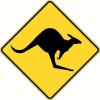So for Christmas I received a long wanted Veritas shoulder plane - Amazing quality tool btw. I have been working on a roubo bench build and will very soon get to a step in the project were I need to trim and fit the leg tenons so I thought to get my new shoulder plane tuned up and ready for its maiden voyage. So I started by honing the back on my diamond plates and that went very smoothly as the bade out of the package was extremely flat. Then I CAREFULLY mounted the blade into my Veritas MK.II honing guide set to the "yellow" 25 degree mark and made sure the blade was perfectly square to the guide and tightened each side of the clamp a small amount at a time until it was secure. I then started to hone the blade on the course diamond plate and after maybe 10-15 strokes I am seeing the uneven sharpening as shown attached picture. So I thought maybe the clamp knobs were at uneven tightness and this was causing the blade to be skewed a little. So I tried adjusting the knobs to try and counteract the skew but could not get it to change and to be honest I could not envision if I needed to loosen or tighten a knob and even which knob needed adjusting. As this is a brand new blade I did not want to get things way off track before asking for advise. Any help or suggestions you can give would be greatly appreciated.
TomD




 Reply With Quote
Reply With Quote





